Why Blocked Sewer Pipes Are Every Homeowner's Nightmare
A blocked sewer pipe is a homeowner's nightmare, capable of turning a home into a health hazard. When the main sewer line clogs, raw sewage can back up through drains, toilets, and tubs, creating a dangerous and expensive mess.
Common causes include tree root intrusion, grease buildup, "flushable" wipes that don't break down, and damaged pipes. Key warning signs are multiple slow drains, gurgling sounds, water backing up in odd places, and foul odors.
Fortunately, most blockages are preventable. Understanding the causes and spotting early signs can save you thousands in emergency repairs. With approximately 80% of American homes connected to a municipal sewer line, this is a widespread concern. While basic drain clearing costs $100 to $500, major blockages requiring excavation can exceed $1,000.
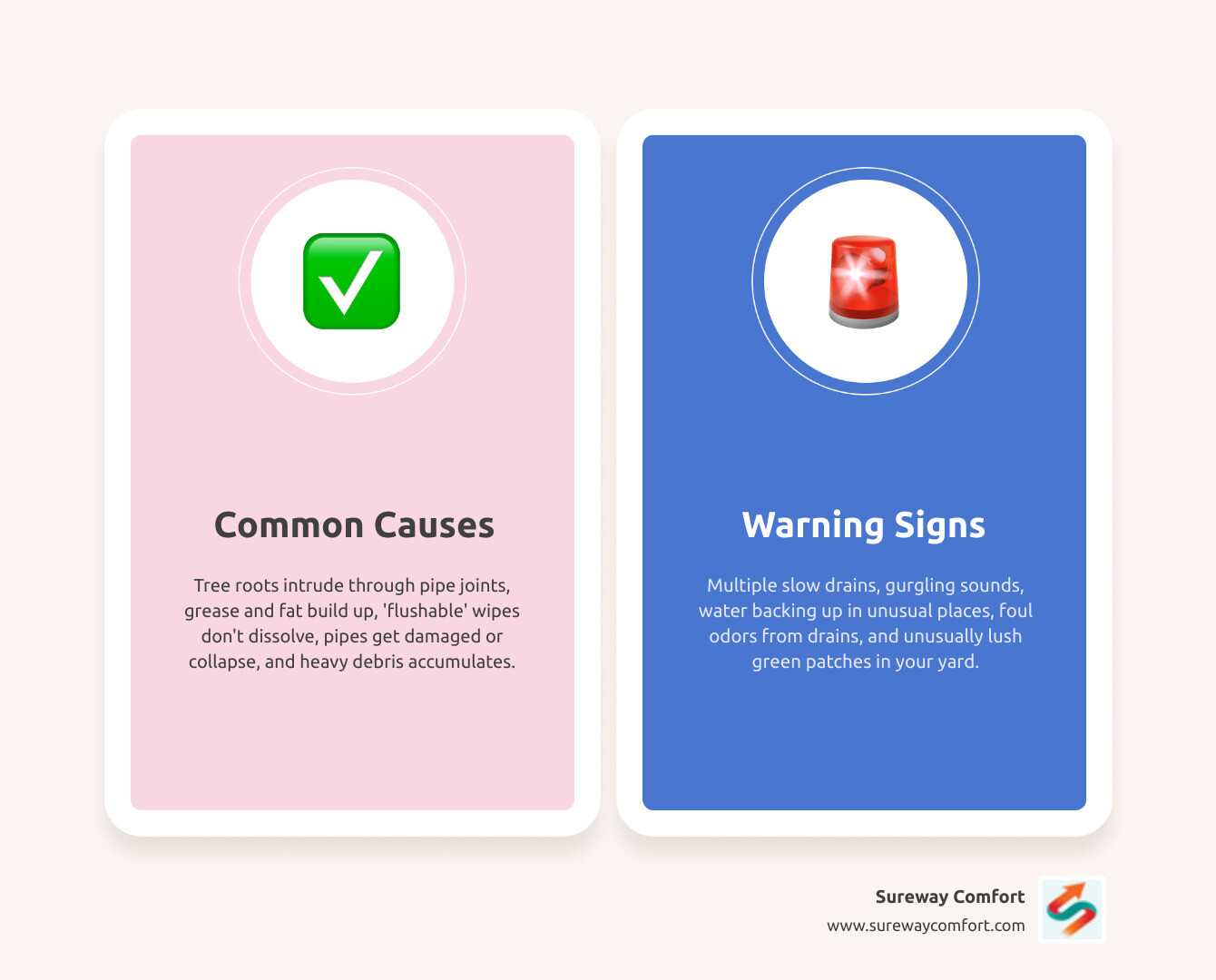
How to Tell if Your Sewer Line is Clogged
How do you know if you have a blocked sewer pipe? Your home provides clues that progress from minor annoyances to a full-blown sewage backup. Catching the problem early can save you from a messy and expensive disaster.
Recognizing the Early Warning Signs
Your plumbing system is constantly trying to communicate with you. Here are the key signals that your main sewer line might be in trouble:
- Multiple slow drains: If your kitchen sink, shower, and toilet all drain sluggishly, the problem is likely in the main line, not an individual drain.
- Gurgling sounds: When you run water and hear gurgling from another drain, it means air is trapped by a blockage. A toilet that gurgles when the shower runs is a classic symptom.
- Water backing up in unusual places: If flushing a toilet causes water to appear in the bathtub, or running your washing machine causes the toilet to overflow, the wastewater has nowhere to go and is finding the lowest escape route.
- Sewage in your floor drain: This is a clear sign of a main line blockage, especially common in basements, which are often the lowest point in your plumbing.
- Foul odors from drains: Persistent sewer gas smells indicate a blockage is preventing proper ventilation.
- Flooded yard or lush grass: A soggy patch of lawn or an unusually green area can mean wastewater is leaking from a broken pipe underground.
- Sewer cleanout issues: If you locate the capped sewer cleanout pipe near your foundation and see sewage inside or overflowing, you've confirmed a severe blockage. Use caution when opening the cap.
Differentiating a Main Line Clog from a Single Drain Clog
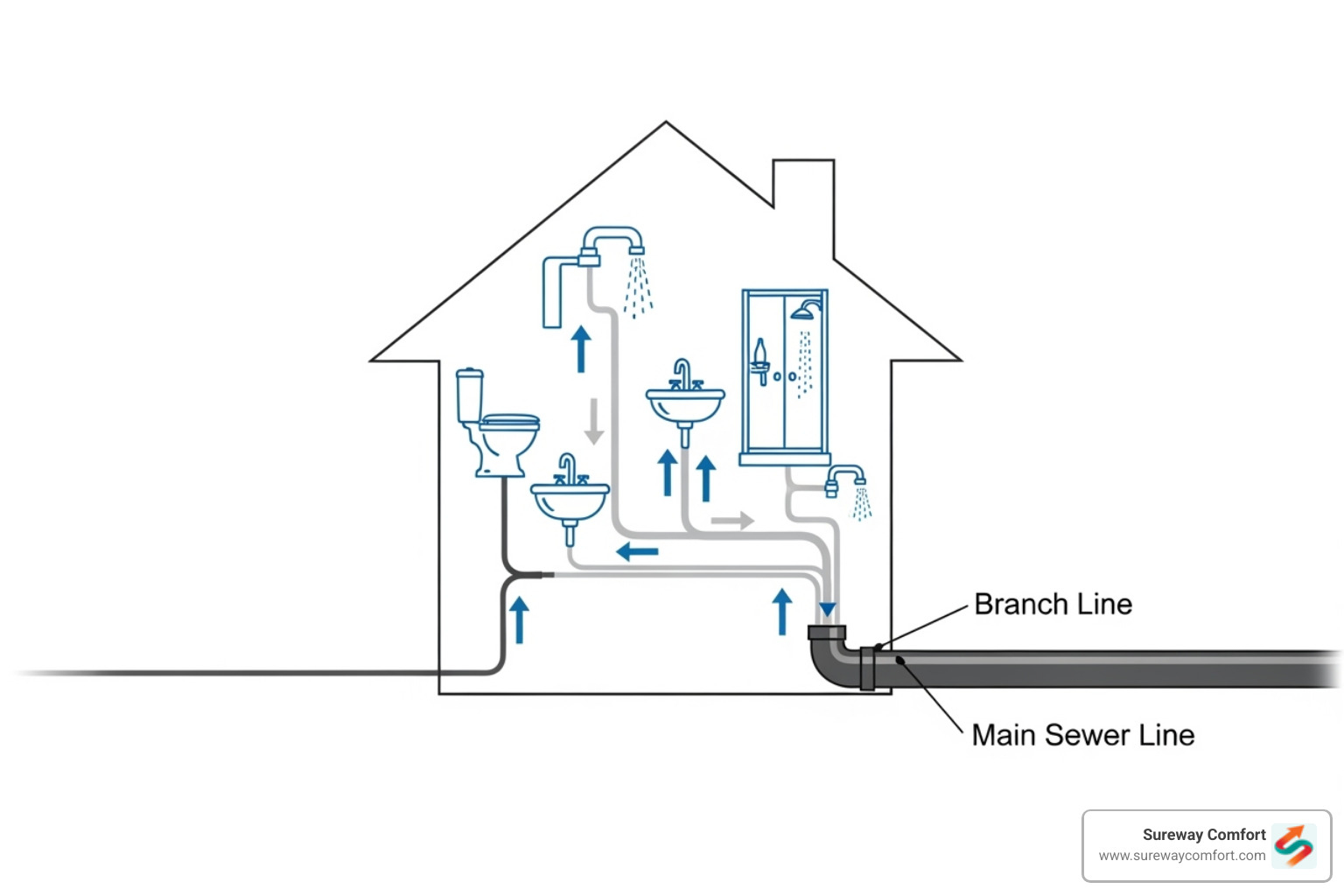
Think of your plumbing as a tree: the main sewer line is the trunk, and individual drains are branches. Understanding this helps you diagnose the problem.
A single fixture issue, like a slow kitchen sink, is usually a localized clog in that specific branch. These are often manageable with a plunger.
However, a multiple fixture issue, especially with drains in different rooms, points to a trunk problem—a blocked sewer pipe in your main line. Since all wastewater flows to this main trunk, a blockage there creates a traffic jam. Low-lying fixtures get affected first, which is why basement drains and ground-floor tubs often show symptoms before upstairs sinks.
What Are the Most Common Causes of a Blocked Sewer Pipe?
Understanding what causes a blocked sewer pipe is the first step in prevention. Blockages are rarely sudden; they're usually the result of long-term buildup, natural processes, or aging infrastructure.
Tree Root Intrusion
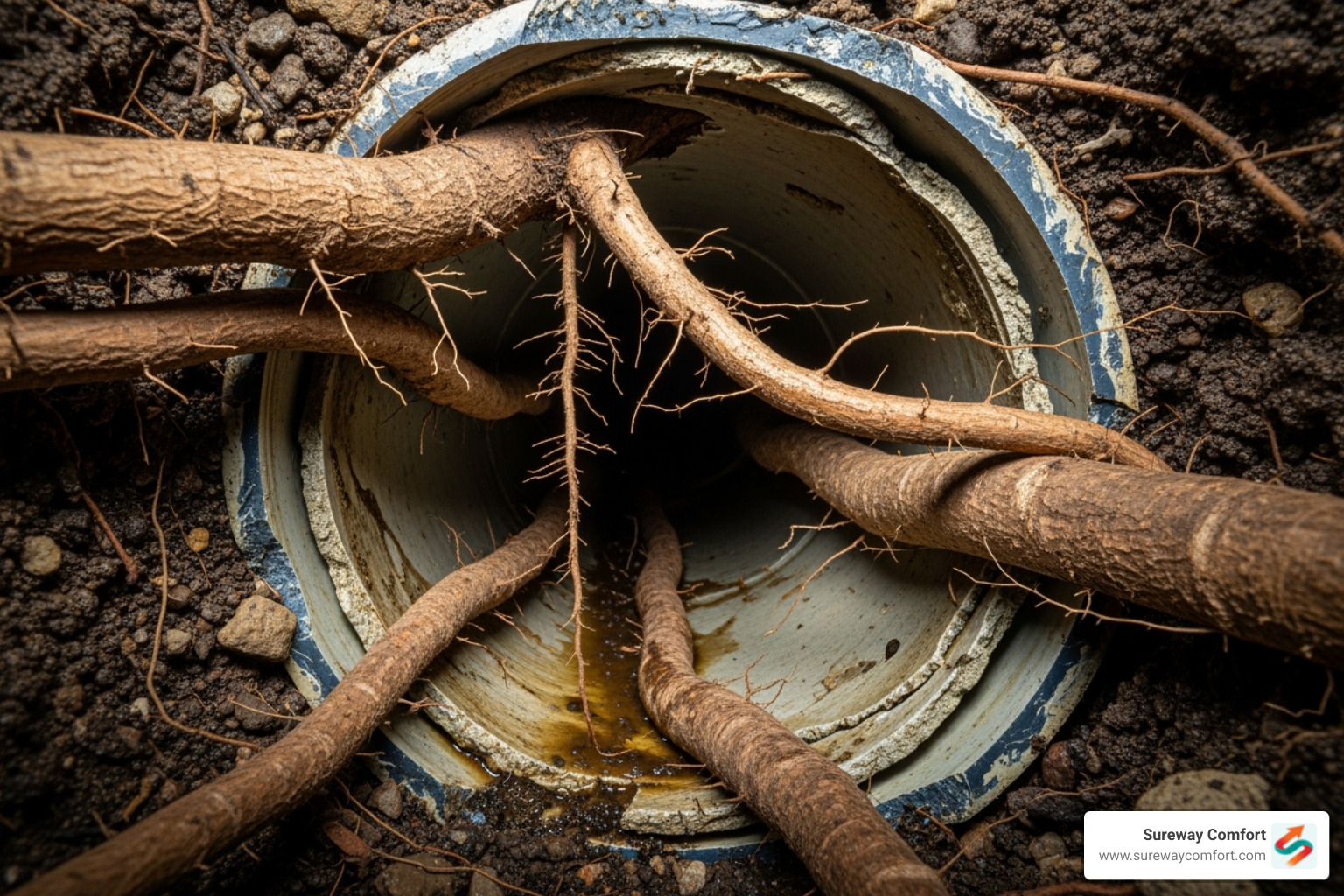
Water-seeking roots are naturally drawn to the moisture in sewer lines. They can sense water vapor escaping from tiny cracks in older pipes, especially clay pipes with aging pipe joints. Research shows that plants can 'hear' water using vibrations, guiding them directly to your pipes. Once inside, they form a dense web that catches debris and causes a major blockage.
Debris, Grease, and "Flushable" Wipes
What you put down your drains matters. The biggest culprits are:
- Fats, oils, and grease (FOG): This solidifies in pipes, creating sticky blockages.
- Food scraps: Items like coffee grounds and pasta clump together with grease.
- Hair: This combines with soap scum in bathroom drains to form stubborn clogs.
- Paper towels & feminine hygiene products: These are designed to be absorbent and strong, not to break down in water.
- "Flushable" wipes: Despite the name, these wipes don't dissolve like toilet paper and are a primary cause of massive clogs.
Damaged, Bellied, or Collapsed Pipes
Sometimes the pipes themselves are the problem. Shifting soil, nearby heavy construction, or natural settling can cause pipes to crack, sag, or collapse. Corrosion deteriorates older cast iron pipes and clay pipes over time. A bellied pipe is a sunken section that collects waste instead of letting it flow. Even small cracks and leaks allow soil and roots to enter, eventually leading to a major blocked sewer pipe.
How to Prevent Sewer Line Blockages
The best way to handle a blocked sewer pipe is to prevent it. Like car maintenance, a little regular care can help you avoid expensive breakdowns. Simple changes to your daily habits and occasional professional help are key.
Best Practices for Your Drains
Your daily habits have a huge impact on your plumbing's health.
- For toilets, stick to the "3 P's": Pee, Poop, and (toilet) Paper. Never flush paper towels, "flushable" wipes, feminine hygiene products, dental floss, or diapers. When in doubt, throw it out.
- In the kitchen, never pour fats, oils, or grease (FOG) down the drain. Scrape cooled grease into the trash.
- Use drain strainers in sinks and showers to catch hair and food particles. Clean them regularly.
- Once a month, use a natural cleaner: Pour half a cup of baking soda down the drain, followed by half a cup of vinegar. After an hour, flush with hot water to break down minor buildup.
- Fixing leaks is also important. The EPA notes that wasted water from leaks can contribute to mineral buildup over time.
The Importance of Professional Inspections
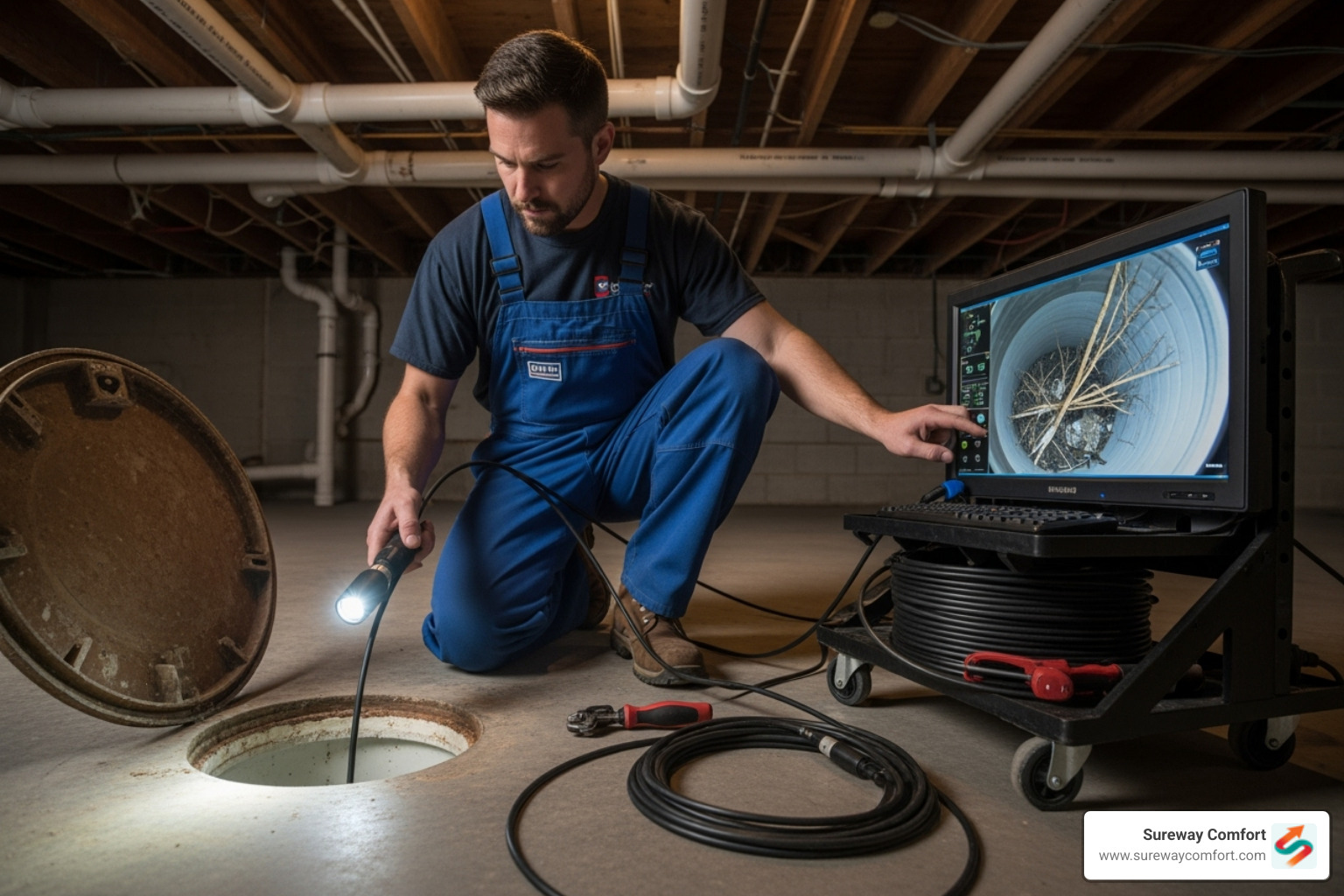
Some problems are hidden underground. We recommend a professional sewer line inspection every two years, especially for older homes or properties with large trees. Using a specialized camera, we can get a real-time view inside your pipes to identify issues before they become emergencies. This allows us to spot small root intrusions, cracks, or grease buildup when the solutions are still simple and inexpensive.
A camera inspection helps us assess your pipe's overall condition and pinpoint the exact cause of recurring clogs, a common issue for homeowners in Bridgeville, South Fayette, Upper St. Clair, and surrounding areas. Our maintenance plans include these inspections to prevent the nightmare of a blocked sewer pipe.
What to Do When You Suspect a Clog
If you suspect a blocked sewer pipe, it's important to act calmly and safely. Knowing your limits can prevent a minor issue from becoming a major disaster.
DIY Steps for a Minor Blocked Sewer Pipe
For a single slow drain, you can try a few things yourself. Always wear gloves and safety glasses.
- Boiling Water: Pour a kettle of boiling water slowly down a kitchen sink to melt grease (avoid with PVC pipes).
- Baking Soda & Vinegar: A 1/3 cup of each can break down minor organic clogs. Let it sit for an hour, then flush with hot water.
- Plunger: A good seal and strong plunging can dislodge many clogs in toilets or sinks.
- Drain Snake (Hand Auger): For deeper clogs, you can use a snake in the affected drain or the main sewer cleanout pipe. Feed the cable until you feel resistance, then crank to break up the clog without forcing it.
When to Call a Pro for a Major Blocked Sewer Pipe
DIY methods have their limits. It's time to call a professional for your blocked sewer pipe when you face these issues:
SituationDIY ApproachProfessional SolutionType of ProblemSingle drain, minor clogMultiple fixtures, recurring issues, tree rootsTools AvailablePlunger, hand snake, household remediesMotorized augers, hydro-jetters, camera inspectionSuccess RateGood for surface clogsAddresses root causes effectivelySafety RiskModerate - sewage exposure possibleLow - trained professionals with proper equipmentCost Range$25-$300 in supplies$100-$500 for clearing; major repairs cost more
You should call us professionals for recurring clogs, issues affecting multiple fixtures, or suspected tree root intrusion. A professional camera inspection is the only way to diagnose structural damage. Crucially, be aware of cross bore danger. A gas line could intersect your sewer line underground. Attempting to clear an outdoor line yourself could damage the gas line, creating a risk of leaks or explosions. Always call 811 or a professional before clearing outside lines. If you have raw sewage backup, turn off your main water supply and call us immediately. This is a health emergency that requires professional handling.
Frequently Asked Questions about Blocked Sewer Pipes
When you're dealing with a blocked sewer pipe, it's natural to have questions. Here are answers to the most common concerns we hear from homeowners in Bridgeville, South Fayette, and surrounding areas.
How much does it cost to clear a blocked sewer line?
The cost to clear a blocked sewer pipe depends on the cause and severity. A simple DIY fix might be under $25. Professional drain clearing typically costs $100 to $500. A camera inspection adds to the cost but is vital for diagnosis. Root removal with hydro-jetting is more expensive. The highest costs are for excavation and major repairs if a pipe is collapsed or damaged, which can range from $1,200 to over $6,000. Pipe relining is a less invasive alternative that can sometimes avoid digging.
Can I use chemical drain cleaners on a main sewer line?
We strongly advise against using chemical drain cleaners for a main blocked sewer pipe. They can damage pipes (especially older cast iron or even PVC), are ineffective on major clogs like roots or grease, pose safety risks from fumes and burns, and are harmful to the environment. For an active blockage, mechanical methods or professional help are safer and more effective.
Who is responsible for a blocked sewer pipe?
This depends on the blockage's location. As the homeowner, you are responsible for your lateral line—the pipe running from your house to the municipal connection. Any clogs or damage in this section are your responsibility. The city is responsible for the main sewer line under the street. If neighbors have the same issue, it's likely a city problem. Shared sewer lines, common in some older neighborhoods, can complicate things, so clear agreements with neighbors are essential. We can help determine the location of the problem and who is responsible.
Protect Your Home from Sewer Backups
Protecting your home from sewage backups starts with proactive prevention. Simple habits like scraping grease into the trash, using drain strainers, and only flushing the three P's (pee, poop, and toilet paper) are your first line of defense against a blocked sewer pipe.
Recognizing symptoms early like gurgling sounds or multiple slow drains allows you to address issues before they become emergencies. When you spot these signs, it's time for professional assistance. Waiting too long or using the wrong DIY method can make the problem worse.
At Sureway Comfort, we focus on preventing problems before they start. Our maintenance plans and experienced technicians serve homeowners throughout Bridgeville, South Fayette, Upper St. Clair, Mt. Lebanon, McDonald, Scott Township, Canonsburg, and Bethel Park. We use the latest camera technology to diagnose issues accurately and offer flexible financing options for necessary repairs.
Don't wait for a disaster. If you're seeing warning signs, act now.
Schedule your professional drain cleaning service in Canonsburg, PA today for peace of mind.



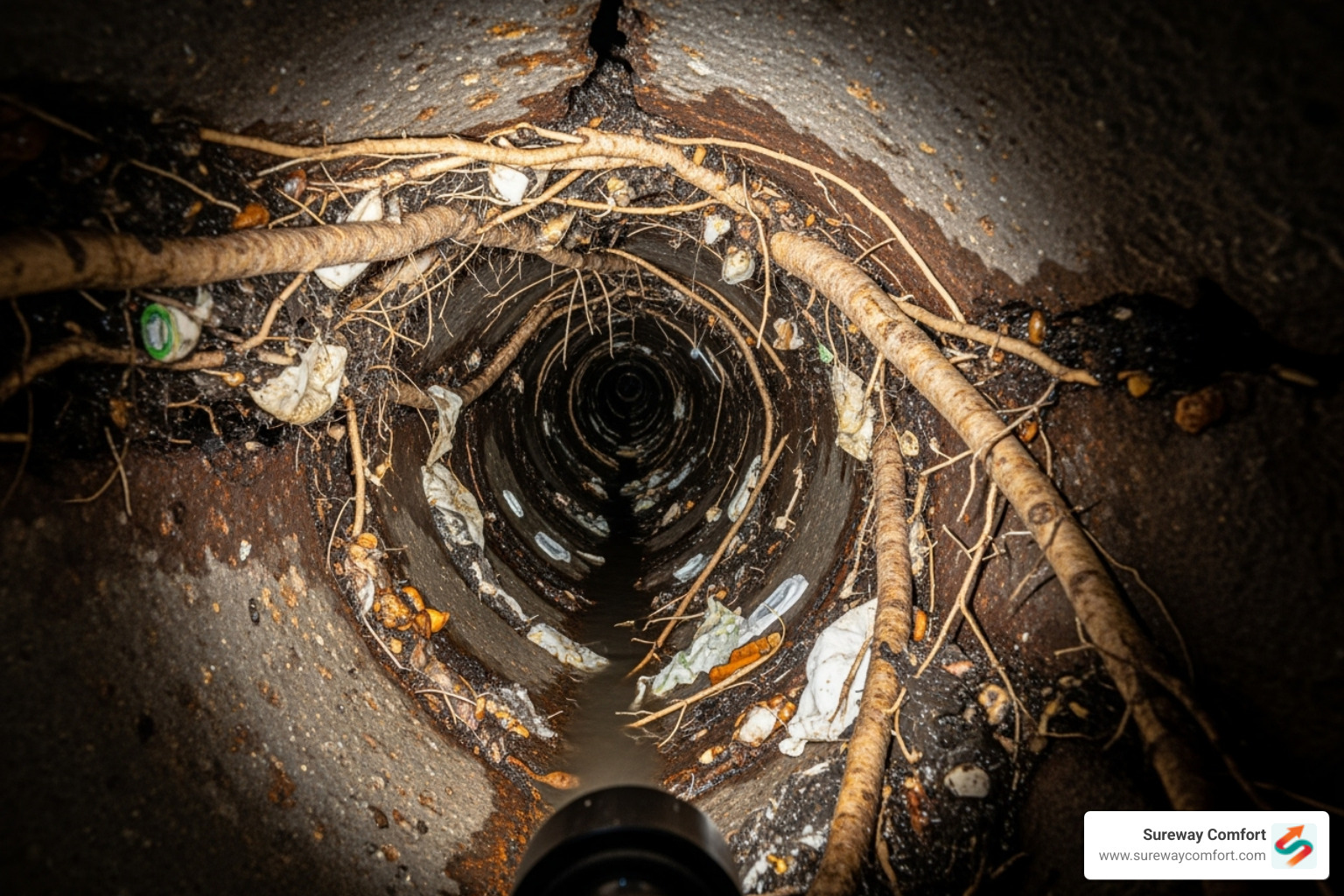


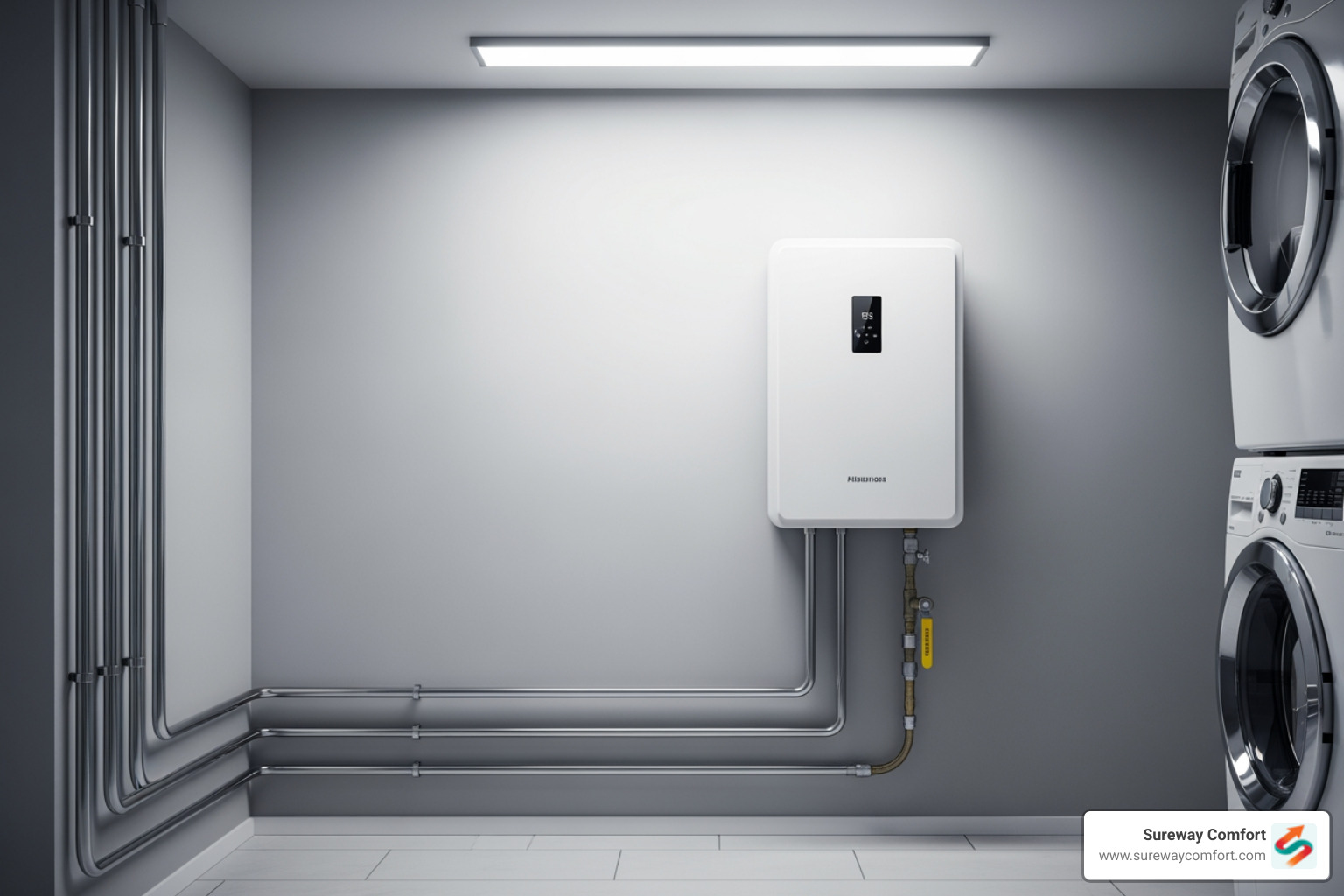
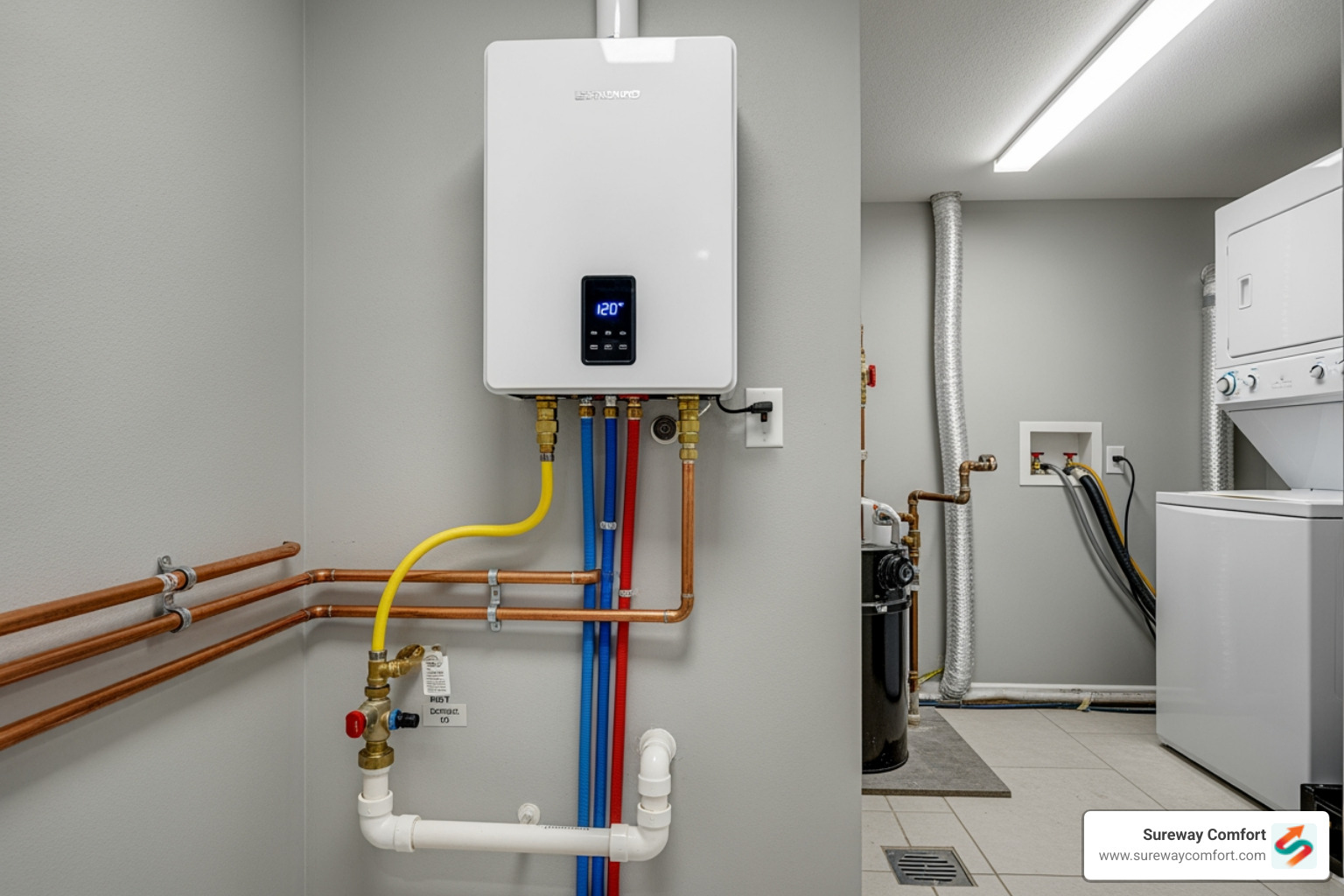




















.avif)



